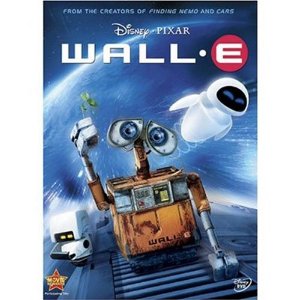3D animated films these days (see my post on The Golden Era of 3D Animated Films) use amazing computer graphics imagery (CGI) technology. These movies incorporate three-dimensional rendering and digital drawing technology that create realistic, high-quality, and stunning visual effects that please the eye.
Since such films are generally quite labor intensive, I was thinking it would be interesting to compare the amount of human effort and time required to produce one of these films. Not necessarily everyone is involved in the labor of such tasks as programming, designing, drawing, or animating all the time, but many people are, and a large percentage of the time in film production is spent on those tasks.
There are likely other costs involved besides technological labor, including software acquisition, voices of the characters, or administrative costs, but we can assume that those are relatively constant and probably not a huge fraction of the operating budget. I’ve also left out from the analysis animated films that combine human footage and animation, such as Transformers, G-Force, or Avatar, to reduce the number of confounding factors.
US inflation-adjusted costs account for approximately 2.5% annually in increases to the budgets since 1995 ( based on data at: http://www.usinflationcalculator.com/inflation/historical-inflation-rates/ ). Therefore, let’s take the average pay of a software developer in the USA to be about $66,000/year ( http://www.payscale.com/research/US/Job=Software_Engineer_%2F_Developer_%2F_Programmer/Salary ) and working 40 hours per week, so $66000 / (50 weeks to include 2 weeks vacation*40h/week) = $33 / hour. Although not everyone working on an animated film is a programmer, and it’s difficult to say exactly how much money they make, this hourly wage will be used as an estimate. I’m assuming some of these people in the film industry work overtime without pay, similar to other workers.
Here are the results (please note some of the numbers are rounded off):
Toy Story (1995)
2010 Inflation-Adjusted Budget: $43 million
Time: 1.3 million man hours, or 150 man years
Unadjusted Budget: $30 million
Unadjusted Gross Revenue: $362 million
Studio: Pixar
Shrek (2001)
2010 Inflation-Adjusted Budget: $75 million
Time: 2.3 million man hours, or 259 man years
Unadjusted Budget: $60 million
Unadjusted Gross Revenue: $484 million
Studio: Dreamworks
A Bug’s Life (1998)
2010 Inflation-Adjusted Budget: $81 million
Time: 2.4 million man hours, or 279 man years
Unadjusted Budget: $60 million
Unadjusted Gross Revenue: $363 million
Studio: Pixar
Antz (1998)
2010 Inflation-Adjusted Budget: $81 million
Time: 2.4 million man hours, or 279 man years
Unadjusted Budget: $60 million
Unadjusted Gross Revenue: $172 million
Studio: Dreamworks
The Incredibles (2004)
2010 Inflation-Adjusted Budget: $107 million
Time: 3.2 million man hours, or 369 man years
Unadjusted Budget: $92 million
Unadjusted Gross Revenue: $631 million
Studio: Pixar
Finding Nemo (2003)
2010 Inflation-Adjusted Budget: $112 million
Time: 3.4 million man hours, or 387 man years
Unadjusted Budget: $94 million
Unadjusted Gross Revenue: $868 million
Studio: Pixar
Kung Fu Panda (2008)
2010 Inflation-Adjusted Budget: $136 million
Time: 4.1 million man hours, or 472 man years
Unadjusted Budget: $130 million
Unadjusted Gross Revenue: $631 million
Studio: Dreamworks
La Ratatouille (2007)
2010 Inflation-Adjusted Budget: $162 million
Time: 4.9 million man hours, or 559 man years
Unadjusted Budget: $150 million
Unadjusted Gross Revenue: $624 million
Studio: Pixar
Up (2009)
2010 Inflation-Adjusted Budget: $179 million
Time: 5.4 million man hours, or 620 man years
Unadjusted Budget: $175 million
Unadjusted Gross Revenue: $731 million
Studio: Pixar
Wall E (2008)
2010 Inflation-Adjusted Budget: $189 million
Time: 5.7 million man hours, or 654 man years
Unadjusted Budget: $180 million
Unadjusted Gross Revenue: $521 million
Studio: Pixar
I guess it’s not too surprising that Wall E takes the championship top spot here. Since the film has barely any dialogue, it probably requires more in terms of labor to animate all those sequences.
Besides it being difficult to compare dollar amounts of budgets due to inflation of different films produced throughout this time period, there are two other factors that may be worth considering: Computer graphics technology in the mid-90s was much more primitive than it is today, so what is easily accomplished today may have taken much more effort earlier on, although that effort is probably still reflected in the amount of time spent creating the cartoons. Another factor is that when a studio is more established later on, they may get more funding, and there may likely be more wasted funds later on. Therefore, for example, Pixar may now have higher film-making budgets, but there may also be more waste due to larger available budgets.
A few interesting conclusions and observations from this analysis of blockbuster 3D animated films: In general, it seems the more reflective, the more silent, or the greater amount of detailed animation sequences in the animated movie, the higher the budget that is required. As with most areas of life, the amount of time, energy, or money spent does not necessarily reflect the popularity or monetary gains from the investment of time, energy, or money. Finally, pioneering new technology and charting new territory is important, as Toy Story, the first 3D animated film that started it all, was probably the most popular and successful in terms of the amount of money received back relative to the amount invested. Finding Nemo seems also to be phenomenally successful, due to its morally valuable storyline.
As an interesting side note, if we add together the man hours all these 10 films, we getting a whopping 4028 man years! Additionally, there are many other outstanding 3D animated films in the last 15 years that have been left out here, so that’s definitely not all the time spent in the 3D animation movie industry. It certainly appears that some projects in this world require enormous numbers of people to cooperate together harmoniously in order to complete and accomplish such monumental projects. Similar to 3D animated movies, 3D animated games likely also require a large amount of effort and energy in generating the many high-quality graphics. Although availability of technology does not necessarily mean people save more time, since these projects actually utilized highly developed technology yet required much time, technology certainly gives people more options, choices, and the possibility of performing less work, or perhaps less arduous work.
For some nifty recent movie trailers, which includes many new animated films, check out some from Commercial Movie Trailers .









